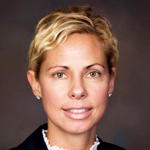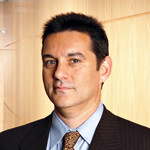
When Patti Stumpp was promoted to senior vice president of human resources at Invacare in 2009, conversations about change within the company’s culture were just beginning. The home- and long-term-care medical device manufacturer had experienced rapid growth, primarily through acquisitions. As a result, it had developed the mentality of a holding company: many of its acquisitions and regional business units continued to operate independently. While this was a successful model at the time, the company realized that the complexity of its structure would not be sustainable for the long term, as health-care reimbursement rates for its customers continued to decline.
“We knew that if we were going to be successful in the future we were going to have to create a model that would be more scalable and actually leverage our size, versus continuing to have separate units,” says Stumpp. “So we started thinking about what worked for us in the past and what would work for us in the future.”
What wouldn’t work were the redundancies that the company was experiencing. For example, the company had three separate engineering groups in different regions all focused on making beds. They recognized they could create efficiencies by assigning two of those groups to work on something else.
It sounds simple, but that kind of change doesn’t come easily. Whenever a company is trying to become more efficient and cohesive, there are always a few employees who will resist or who won’t be able or willing to make the change. But Stumpp’s expertise in human relations allowed her to manage such personalities with care. “HR people are supposed to speak for the people,” she says. “At the end of the day we’re all employees, too. We often gather our team to talk about what we’re thinking, and if it’s in our heads, it’s usually in other people’s heads, too.”
Stumpp also makes a practice of not doing HR from her office. She and her team are constantly out talking to and working among other employees and finding ways to make their needs match with those of management. “One of the key elements of good HR is balancing the employee need with the company need,” she says. “Ultimately, you have to find the place that works for everybody and meets both needs. Not everything is going to be something people like, but above all we try to be fair and consistent.”
One of the largest challenges of corporate streamlining for a large organization like Invacare is communicating those changes to all of the employees. Invacare employs 5,400 people globally, and while many are based at its headquarters, the company has individual salespeople in almost every state. Posting a notice in the break room is no longer a viable option for corporate communications. Even sending an e-mail is not the most reliable way of communicating for employees in the field.
New technology came to the rescue for Invacare, which uses Webex and conference calls to help communications reach the far corners of the company. “With Webex, we had the video presence plus the power to interact and engage with people,” Stumpp says. “It was probably one of the best things we did, especially when we were showing our four or five key initiatives. Being able to see the person in the present goes a long way.”
Lots of changes have already been made in the company, but there’s still plenty of work left to do, Stumpp says. And with the industry constantly changing because of new regulations in health insurance and reimbursement, not everything always goes according to the initial plan. “There’s plenty of opportunity for growth for us, and we’re evaluating the strategies that make sense over the next few years,” Stumpp says. “The process is ongoing and we’re always developing the next initiative or strategy.”
Throughout the changes, a few core values remain constant for Invacare, and its executive team is always trying to keep the magic that they started with. “We want to preserve the magic of the entrepreneurial spirit,” Stumpp says. “That’s what made us great, and that’s why people are attracted to Invacare. We want to have a global competitive engine with the entrepreneurial spirit at its core.”















